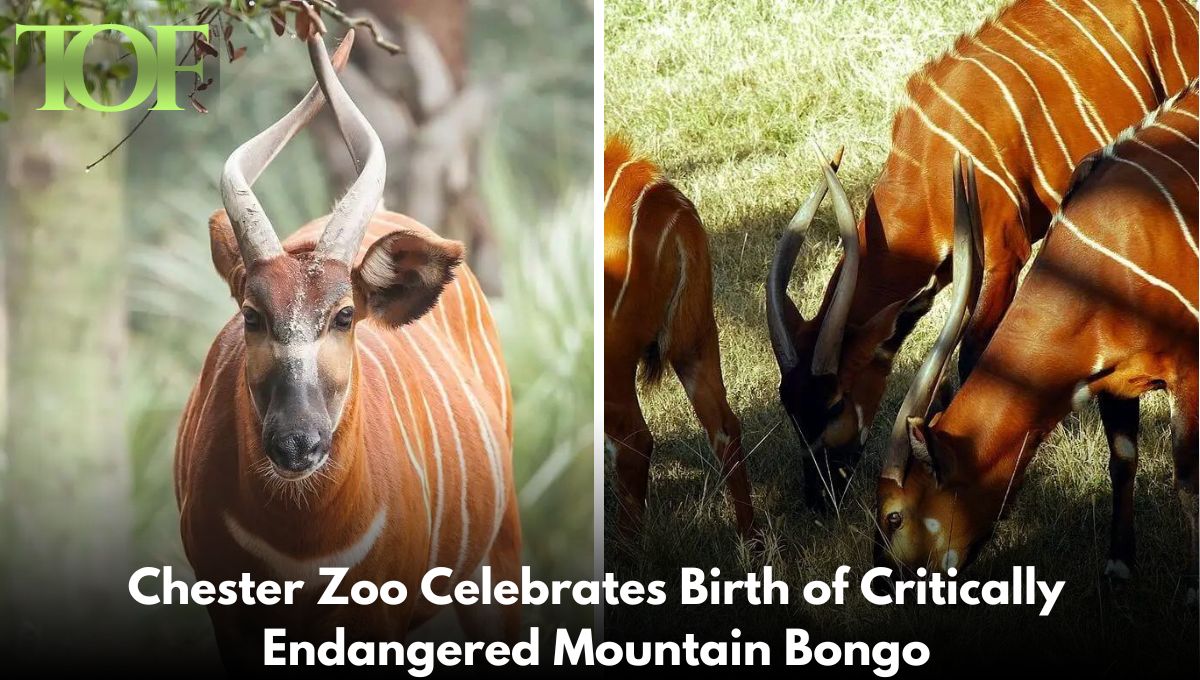Endangered Mountain Bongo
Chester Zoo is proud to announce a critically endangered mountain bongo calf. Such a rare birth will give cheer to the species on the brink of extinction, which has become a great achievement in world conservation efforts.
A nine-and-a-half-month gestation brought forth a female calf named Navari, the offspring of Nolliag and Moti. It is only the second successful birth at this zoo in the last 15 years. Chestnut in coat color with thin white stripes, Navari spends much time now with her mother, who stays right with her, feeding and looking after her.
The mountain bongos are the largest of the forest-living antelopes; they thrive in Kenya’s dense forests and highlands. Their distinctive reddish-brown coat, with white markings, identifies them easily. Unfortunately, this species is listed as critically endangered by IUCN; today probably less than 50 individuals are remaining in the wild. Factors that have been identified as major causes of the decline in bongos are
- Habitat destruction
- Hunting
- Diseases from livestock
Bongos have the leopard as their wild predators. Bongos have a unique instinct of retraction of their horns along their neck during flight through forests so that they do not snag on the underbrush. Since the species is on the very edge of extinction, every birth from a captive setting can be said to be crucial for its survival.
Mike Jordan, head of Plants and Animals at Chester Zoo, described the significance of the birth to the global avoidance of extinction project for the mountain bongo. “It’s almost heartbreaking that one of those visually dramatic and large mammals has been reduced to the point where they are represented by only a few dozen animals in the wilds of Kenya we estimate now.”.He added, however, that there is still hope: “Our dedicated conservation teams are working on multiple fronts to ensure that these beautiful and highly threatened animals have a future.”
This calf is part of a breeding program to establish a self-sustaining population of mountain bongos, with this birth being one of the major steps to species recovery. With already in place plans for releasing captive-bred bongos, it becomes very important that conservation efforts set a firm foundation for future reintroduction programs.There have been collaborations and partnerships involving Kenya conservation partners and international zoos with the strategy.
Mountain bongos are not very easy to spot, said Dr. Nick Davis, General Manager of Mammals at Chester Zoo and coordinator of the European breeding program for mountain bongos, pointing out how this calf is important. “Calves are quite fond of hiding places due to their instinct for safety, early in their life,” he adds, “and their large ears are part of the defense mechanism against predators such as leopards and hyenas.”.
The organization is also collaborating with Liverpool John Moores University in an attempt to develop a high-tech AI-based tracking system in the wild, which aims to monitor and further learn about mountain bongo populations. These highly sensitive detection technologies are on the verge of taking part in safeguarding what remains of its wild populations.
Navari’s birth was more than the birth of a single new life-it marked a crucial step toward an effort to preserve one of the world’s most endangered animals. Ongoing breeding, research, and international cooperation are strengthening the hope that these mountain bongos might once again be seen thriving in the wild.
However, the good breeding of mountain bongos in Chester Zoo does give hope and reminds us that modern conservation efforts are vital in the preservation of species close to extinction.
To Read More: Global News

